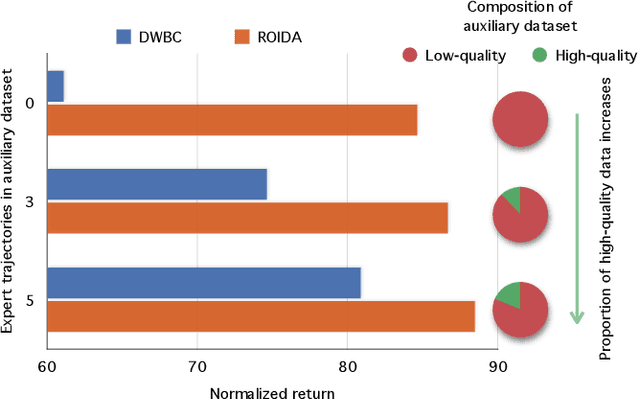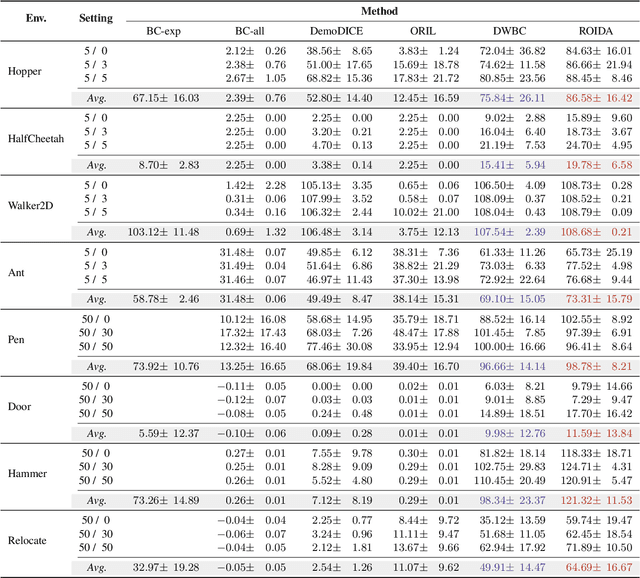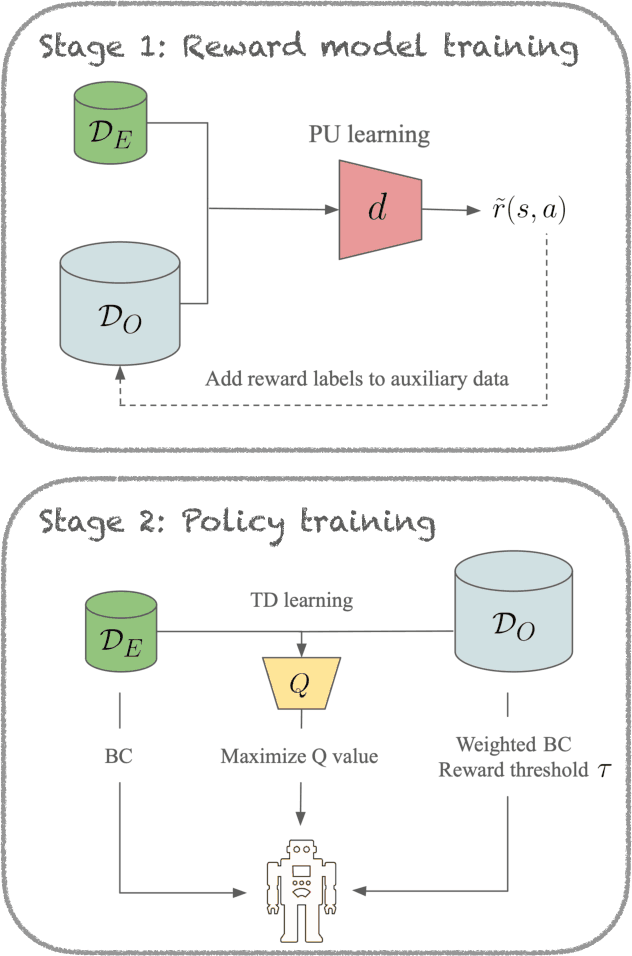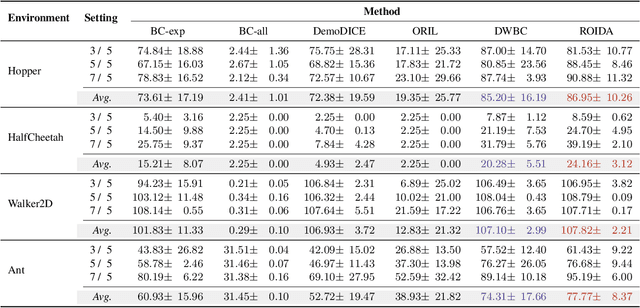Amit K. Roy-Chowdhury
Leveraging Synthetic Adult Datasets for Unsupervised Infant Pose Estimation
Apr 08, 2025Abstract:Human pose estimation is a critical tool across a variety of healthcare applications. Despite significant progress in pose estimation algorithms targeting adults, such developments for infants remain limited. Existing algorithms for infant pose estimation, despite achieving commendable performance, depend on fully supervised approaches that require large amounts of labeled data. These algorithms also struggle with poor generalizability under distribution shifts. To address these challenges, we introduce SHIFT: Leveraging SyntHetic Adult Datasets for Unsupervised InFanT Pose Estimation, which leverages the pseudo-labeling-based Mean-Teacher framework to compensate for the lack of labeled data and addresses distribution shifts by enforcing consistency between the student and the teacher pseudo-labels. Additionally, to penalize implausible predictions obtained from the mean-teacher framework, we incorporate an infant manifold pose prior. To enhance SHIFT's self-occlusion perception ability, we propose a novel visibility consistency module for improved alignment of the predicted poses with the original image. Extensive experiments on multiple benchmarks show that SHIFT significantly outperforms existing state-of-the-art unsupervised domain adaptation (UDA) pose estimation methods by 5% and supervised infant pose estimation methods by a margin of 16%. The project page is available at: https://sarosijbose.github.io/SHIFT.
SeGuE: Semantic Guided Exploration for Mobile Robots
Apr 04, 2025Abstract:The rise of embodied AI applications has enabled robots to perform complex tasks which require a sophisticated understanding of their environment. To enable successful robot operation in such settings, maps must be constructed so that they include semantic information, in addition to geometric information. In this paper, we address the novel problem of semantic exploration, whereby a mobile robot must autonomously explore an environment to fully map both its structure and the semantic appearance of features. We develop a method based on next-best-view exploration, where potential poses are scored based on the semantic features visible from that pose. We explore two alternative methods for sampling potential views and demonstrate the effectiveness of our framework in both simulation and physical experiments. Automatic creation of high-quality semantic maps can enable robots to better understand and interact with their environments and enable future embodied AI applications to be more easily deployed.
TruthLens: Explainable DeepFake Detection for Face Manipulated and Fully Synthetic Data
Mar 20, 2025Abstract:Detecting DeepFakes has become a crucial research area as the widespread use of AI image generators enables the effortless creation of face-manipulated and fully synthetic content, yet existing methods are often limited to binary classification (real vs. fake) and lack interpretability. To address these challenges, we propose TruthLens, a novel and highly generalizable framework for DeepFake detection that not only determines whether an image is real or fake but also provides detailed textual reasoning for its predictions. Unlike traditional methods, TruthLens effectively handles both face-manipulated DeepFakes and fully AI-generated content while addressing fine-grained queries such as "Does the eyes/nose/mouth look real or fake?" The architecture of TruthLens combines the global contextual understanding of multimodal large language models like PaliGemma2 with the localized feature extraction capabilities of vision-only models like DINOv2. This hybrid design leverages the complementary strengths of both models, enabling robust detection of subtle manipulations while maintaining interpretability. Extensive experiments on diverse datasets demonstrate that TruthLens outperforms state-of-the-art methods in detection accuracy (by 2-14%) and explainability, in both in-domain and cross-data settings, generalizing effectively across traditional and emerging manipulation techniques.
CHROME: Clothed Human Reconstruction with Occlusion-Resilience and Multiview-Consistency from a Single Image
Mar 19, 2025Abstract:Reconstructing clothed humans from a single image is a fundamental task in computer vision with wide-ranging applications. Although existing monocular clothed human reconstruction solutions have shown promising results, they often rely on the assumption that the human subject is in an occlusion-free environment. Thus, when encountering in-the-wild occluded images, these algorithms produce multiview inconsistent and fragmented reconstructions. Additionally, most algorithms for monocular 3D human reconstruction leverage geometric priors such as SMPL annotations for training and inference, which are extremely challenging to acquire in real-world applications. To address these limitations, we propose CHROME: Clothed Human Reconstruction with Occlusion-Resilience and Multiview-ConsistEncy from a Single Image, a novel pipeline designed to reconstruct occlusion-resilient 3D humans with multiview consistency from a single occluded image, without requiring either ground-truth geometric prior annotations or 3D supervision. Specifically, CHROME leverages a multiview diffusion model to first synthesize occlusion-free human images from the occluded input, compatible with off-the-shelf pose control to explicitly enforce cross-view consistency during synthesis. A 3D reconstruction model is then trained to predict a set of 3D Gaussians conditioned on both the occluded input and synthesized views, aligning cross-view details to produce a cohesive and accurate 3D representation. CHROME achieves significant improvements in terms of both novel view synthesis (upto 3 db PSNR) and geometric reconstruction under challenging conditions.
Provable Benefits of Task-Specific Prompts for In-context Learning
Mar 05, 2025Abstract:The in-context learning capabilities of modern language models have motivated a deeper mathematical understanding of sequence models. A line of recent work has shown that linear attention models can emulate projected gradient descent iterations to implicitly learn the task vector from the data provided in the context window. In this work, we consider a novel setting where the global task distribution can be partitioned into a union of conditional task distributions. We then examine the use of task-specific prompts and prediction heads for learning the prior information associated with the conditional task distribution using a one-layer attention model. Our results on loss landscape show that task-specific prompts facilitate a covariance-mean decoupling where prompt-tuning explains the conditional mean of the distribution whereas the variance is learned/explained through in-context learning. Incorporating task-specific head further aids this process by entirely decoupling estimation of mean and variance components. This covariance-mean perspective similarly explains how jointly training prompt and attention weights can provably help over fine-tuning after pretraining.
Unsupervised Domain Adaptation for Occlusion Resilient Human Pose Estimation
Jan 06, 2025



Abstract:Occlusions are a significant challenge to human pose estimation algorithms, often resulting in inaccurate and anatomically implausible poses. Although current occlusion-robust human pose estimation algorithms exhibit impressive performance on existing datasets, their success is largely attributed to supervised training and the availability of additional information, such as multiple views or temporal continuity. Furthermore, these algorithms typically suffer from performance degradation under distribution shifts. While existing domain adaptive human pose estimation algorithms address this bottleneck, they tend to perform suboptimally when the target domain images are occluded, a common occurrence in real-life scenarios. To address these challenges, we propose OR-POSE: Unsupervised Domain Adaptation for Occlusion Resilient Human POSE Estimation. OR-POSE is an innovative unsupervised domain adaptation algorithm which effectively mitigates domain shifts and overcomes occlusion challenges by employing the mean teacher framework for iterative pseudo-label refinement. Additionally, OR-POSE reinforces realistic pose prediction by leveraging a learned human pose prior which incorporates the anatomical constraints of humans in the adaptation process. Lastly, OR-POSE avoids overfitting to inaccurate pseudo labels generated from heavily occluded images by employing a novel visibility-based curriculum learning approach. This enables the model to gradually transition from training samples with relatively less occlusion to more challenging, heavily occluded samples. Extensive experiments show that OR-POSE outperforms existing analogous state-of-the-art algorithms by $\sim$ 7% on challenging occluded human pose estimation datasets.
Towards a Universal Synthetic Video Detector: From Face or Background Manipulations to Fully AI-Generated Content
Dec 16, 2024



Abstract:Existing DeepFake detection techniques primarily focus on facial manipulations, such as face-swapping or lip-syncing. However, advancements in text-to-video (T2V) and image-to-video (I2V) generative models now allow fully AI-generated synthetic content and seamless background alterations, challenging face-centric detection methods and demanding more versatile approaches. To address this, we introduce the \underline{U}niversal \underline{N}etwork for \underline{I}dentifying \underline{T}ampered and synth\underline{E}tic videos (\texttt{UNITE}) model, which, unlike traditional detectors, captures full-frame manipulations. \texttt{UNITE} extends detection capabilities to scenarios without faces, non-human subjects, and complex background modifications. It leverages a transformer-based architecture that processes domain-agnostic features extracted from videos via the SigLIP-So400M foundation model. Given limited datasets encompassing both facial/background alterations and T2V/I2V content, we integrate task-irrelevant data alongside standard DeepFake datasets in training. We further mitigate the model's tendency to over-focus on faces by incorporating an attention-diversity (AD) loss, which promotes diverse spatial attention across video frames. Combining AD loss with cross-entropy improves detection performance across varied contexts. Comparative evaluations demonstrate that \texttt{UNITE} outperforms state-of-the-art detectors on datasets (in cross-data settings) featuring face/background manipulations and fully synthetic T2V/I2V videos, showcasing its adaptability and generalizable detection capabilities.
Unfair Alignment: Examining Safety Alignment Across Vision Encoder Layers in Vision-Language Models
Nov 06, 2024



Abstract:Vision-language models (VLMs) have improved significantly in multi-modal tasks, but their more complex architecture makes their safety alignment more challenging than the alignment of large language models (LLMs). In this paper, we reveal an unfair distribution of safety across the layers of VLM's vision encoder, with earlier and middle layers being disproportionately vulnerable to malicious inputs compared to the more robust final layers. This 'cross-layer' vulnerability stems from the model's inability to generalize its safety training from the default architectural settings used during training to unseen or out-of-distribution scenarios, leaving certain layers exposed. We conduct a comprehensive analysis by projecting activations from various intermediate layers and demonstrate that these layers are more likely to generate harmful outputs when exposed to malicious inputs. Our experiments with LLaVA-1.5 and Llama 3.2 show discrepancies in attack success rates and toxicity scores across layers, indicating that current safety alignment strategies focused on a single default layer are insufficient.
Exocentric To Egocentric Transfer For Action Recognition: A Short Survey
Oct 27, 2024Abstract:Egocentric vision captures the scene from the point of view of the camera wearer while exocentric vision captures the overall scene context. Jointly modeling ego and exo views is crucial to developing next-generation AI agents. The community has regained interest in the field of egocentric vision. While the third-person view and first-person have been thoroughly investigated, very few works aim to study both synchronously. Exocentric videos contain many relevant signals that are transferrable to egocentric videos. In this paper, we provide a broad overview of works combining egocentric and exocentric visions.
Robust Offline Imitation Learning from Diverse Auxiliary Data
Oct 04, 2024



Abstract:Offline imitation learning enables learning a policy solely from a set of expert demonstrations, without any environment interaction. To alleviate the issue of distribution shift arising due to the small amount of expert data, recent works incorporate large numbers of auxiliary demonstrations alongside the expert data. However, the performance of these approaches rely on assumptions about the quality and composition of the auxiliary data. However, they are rarely successful when those assumptions do not hold. To address this limitation, we propose Robust Offline Imitation from Diverse Auxiliary Data (ROIDA). ROIDA first identifies high-quality transitions from the entire auxiliary dataset using a learned reward function. These high-reward samples are combined with the expert demonstrations for weighted behavioral cloning. For lower-quality samples, ROIDA applies temporal difference learning to steer the policy towards high-reward states, improving long-term returns. This two-pronged approach enables our framework to effectively leverage both high and low-quality data without any assumptions. Extensive experiments validate that ROIDA achieves robust and consistent performance across multiple auxiliary datasets with diverse ratios of expert and non-expert demonstrations. ROIDA effectively leverages unlabeled auxiliary data, outperforming prior methods reliant on specific data assumptions.
 Add to Chrome
Add to Chrome Add to Firefox
Add to Firefox Add to Edge
Add to Edge